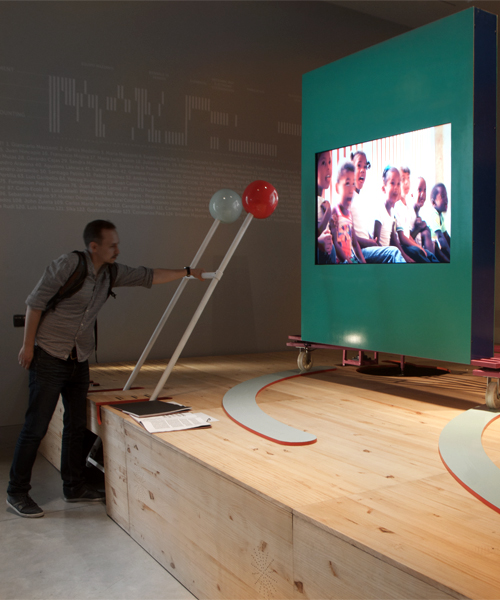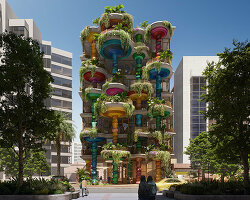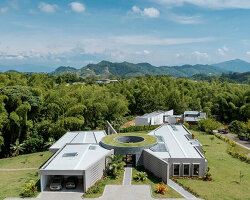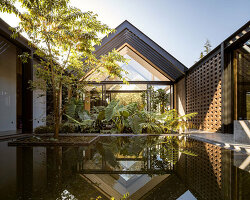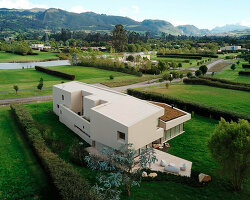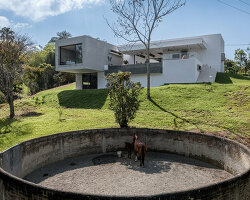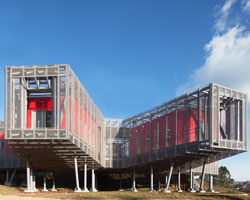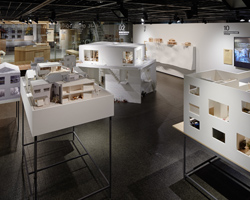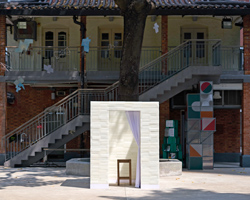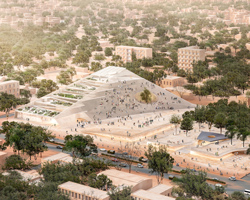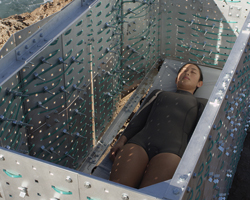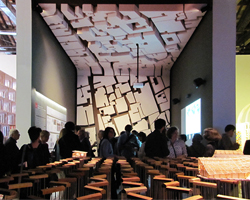giancarlo mazzanti’s TRUSTICS showcases how architecture can build social welfare
image courtesy of el equipo mazzanti
for this year’s venice architecture biennale, colombian architect giancarlo mazzanti proposed an interactive installation that creates a narrative about how building trust networks is a transversal tactic that exists in the process of thinking, creating and living architectural projects. the exhibition called ‘trustics’–a word play between trust and tactics–showcases three different examples from the architect’s firm—el equipo mazzanti—that explain how creating networks and using the trust tactic can turn an architectural project into a successful transformation of the urban realities. users are invited to explore the projects by manipulating a series of video stories that present the negotiations between the different actors in order to represent a metaphor of the building networks.
during the biennale designboom interviewed the architect, who shared with us his take on the responsibility of architecture in our contemporary world and how trust is the starting point for any social project.
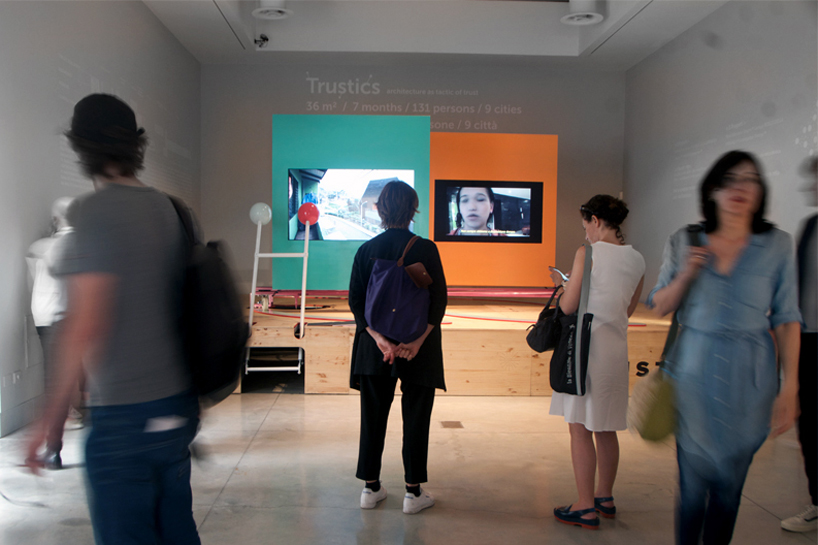
‘trustics’ showcases how architecture can build relationships, networks, and trust
image courtesy of el equipo mazzanti
designboom: why do you think the themes of this year’s biennale (housing, migration, access to sanitation etc.) are particularly relevant at this time?
giancarlo mazzanti: for us, social inequality embraces all the themes alejandro aravena proposed to address in this biennale. this has deep historical roots and takes on different expressions of distrust that affect the everyday life of everyone around the world. it is about a pyramidal structure that is manifested in quality of life, economic levels, access to basic services, education, and in general, a social imaginary of what life is, that is strongly differentiated between individuals and population groups. therefore, this type of situation sets deep limits that determine labor, social and educational pathways that perpetuate our social distances. in this context, access to knowledge, resources, experiences and opportunities are a constant privilege for a certain group of citizens.
given these facts, architecture—as a key part of the physical and social construction of our environment—obliges us to define our political position in regard to the lack of access to basic opportunities some people face that is evident today.
the biennale’s social proposal is much broader than the simple fact of working with poor communities or with visible problems. in this sense, for us, the social part corresponds to the construction and creation of cultural acts relevant to our contemporary life conditions; the value of instability, or to bring to the table and discuss architecture as a utilitarian act of efficacy among many other ideas that can generate a debate and new perspectives for the current projection of the built environment.
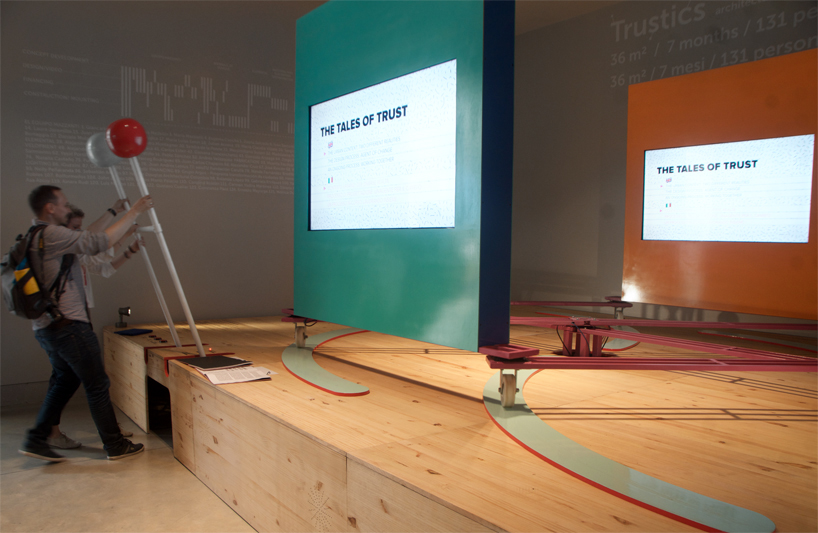
the installation reacts to people’s behaviors
image courtesy of el equipo mazzanti
db: how do these themes play a part in your own practice?
gm: one of the most difficult aspects when designing projects in the peripheries of our cities and degraded areas is the lack of confidence people have in their leaders or institutions working in the neighborhood. the first problem we face is that of finding trust in the community when we say our aim is to build inclusive architecture projects that are able to generate ownership and pride. we believe that architects not only play the role of designers, but also of mediators that can achieve to build networks and relationships between architecture, customers and communities in order to ensure a real impact.
we believe that one of the main values of architecture is to build social welfare, and in this way, our work is to understand and anticipate what architecture is capable of generating in terms of behavior and social actions. the idea of trust is one of the main pillars to achieve welfare.
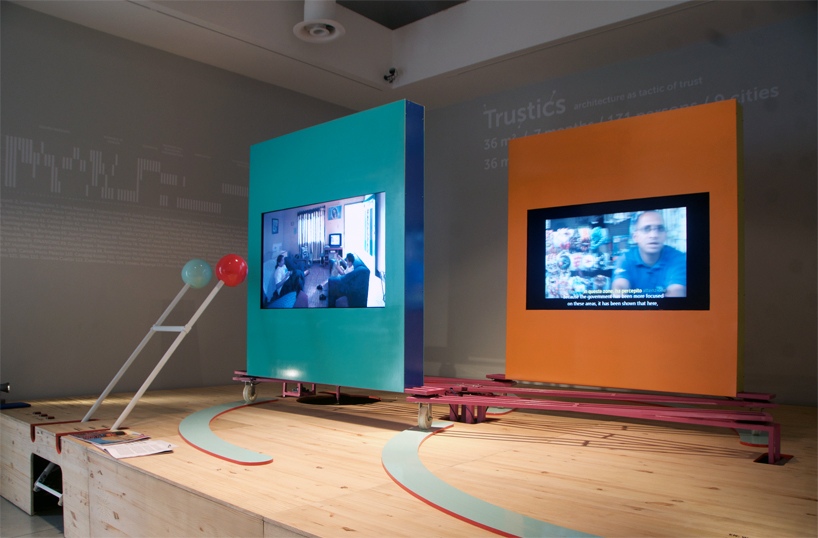
three different configurations show the different stages of the projects
image courtesy of el equipo mazzanti
db: what are you presenting at the architecture biennale and what do you aim to express with it?
gm: for us, this opportunity goes beyond showing the material construction of a project, and reporting from the front involves revealing how this process has been framed by an establishment of ties and relationships that have led to building confidence within the communities where we work and how our structures respond to these. this is what we call from our architectural point of view, a trust tactic (trustics).
the installation is a giant toy which requires the user to activate it, and that looks for a communal effort from the spectators. it has two levers which control the machine and aims to show the different moments a project faces from the perspective of building trust and networks.
we show three different narratives: the past of the cities and the actors involved; the moment we tackle the problem through the use of design; and testimonies from users. the toy is a physical metaphor of these three different situations and it expands and contracts to show how the networks of actors operate, gather and leave traces of change.
with the toy we aim to visualize an idea of architecture based more on recreational actions than that of an architecture based only on its effectiveness and utilitarian function, as structuring elements of space.
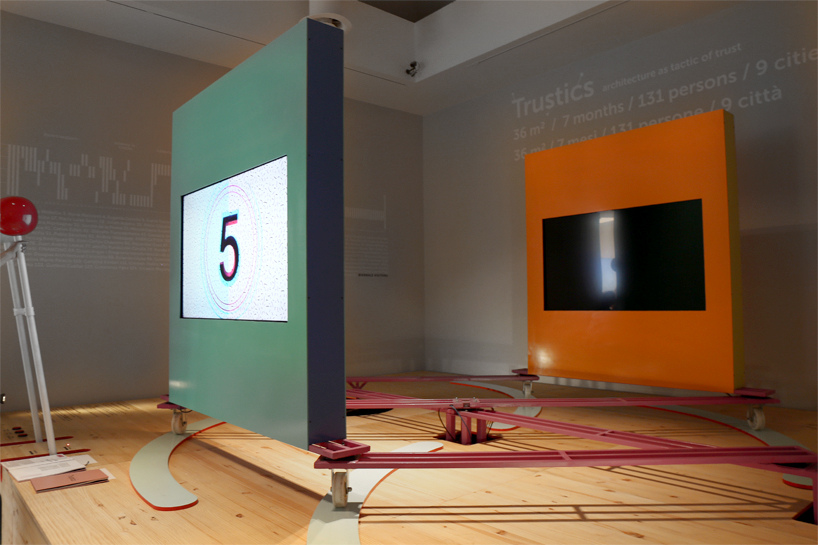
when the two screens are separated from each other, they show the realities surrounding the project begins
image © designboom
db: you have been very successful at conveying your ideas and your designs through diagrams, talks etc. how do these methods help articulate and express architectural projects?
gm: some of our projects have built examples of citizen participation and pride; the value of architecture should not be only in itself, but in what it produces. this is one of the statements that we seek to put into practice in the buildings we design. having a clear methodology based on knowing that the most important thing is what we encourage, and not the object itself, allows us to work from the plot and even from the narrative. these methods allow us to be clearer in our explorations of how to anticipate or predict what buildings generate and how they transform the behavior of people and their immediate surroundings. it also lets us take further the idea we have of encouraging new forms of behavior, economic transformation, entrepreneurship and many other activities that generate pride and belonging within communities, because it’s value is not only in whether they are beautiful or ugly, but in how inhabitants multiply the buildings’ uses by appropriating the spaces for their needs.
an architectural project is not the idea of an architect, but a conversation between many different professionals that base their practice in trust. the stroke or shape of a building is not defined by talent, it is rather defined by the speech it articulates on society and the conditions that we work on as collective answers of an interdisciplinary group to the collective conditions of the wider communities.
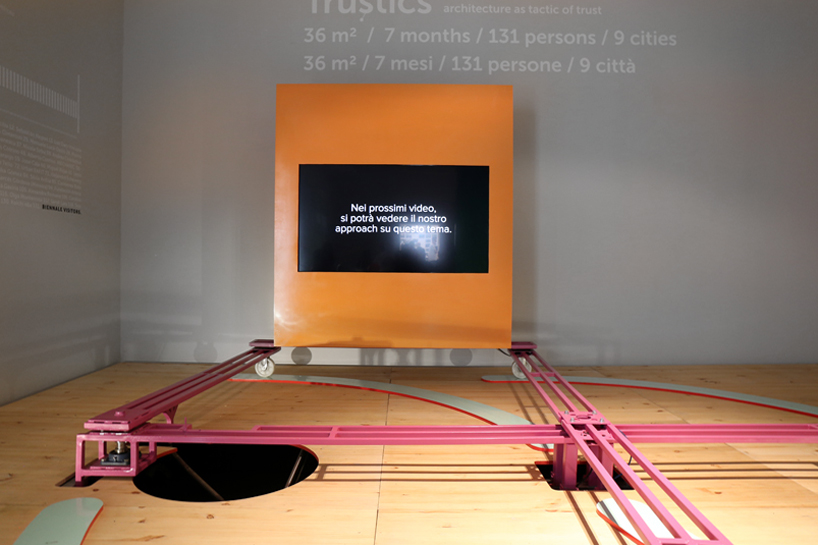
the second stage, when screens face is when the project is developing
image © designboom
db: do you feel that architects, and the profession in general, struggle to engage with the general public?
gm: the multidisciplinary work is changing this. it is true that architecture is a discipline usually observed from the basis of building techniques and form, but it is becoming more understood as a physical strategy of political and social betterment.
we believe in working laterally with other disciplines or social scientists seeking to understand the cultural complexity in which we live, and at the same time have direct contact with the communities that will be affected, in order to properly assess the needs, strengths and desires they have. this makes this difficulty you are mentioning increasingly obsolete, and redefines the way that architecture is thinking and evolving.
working with communities is not based only on meeting needs or desires; it is a mechanism for building collective thoughts where we generate two different forms of learning. the question is always what we want to learn from the community, and what the community learns from the development process. only when we see community service as a way of learning, will we break the existing barriers.
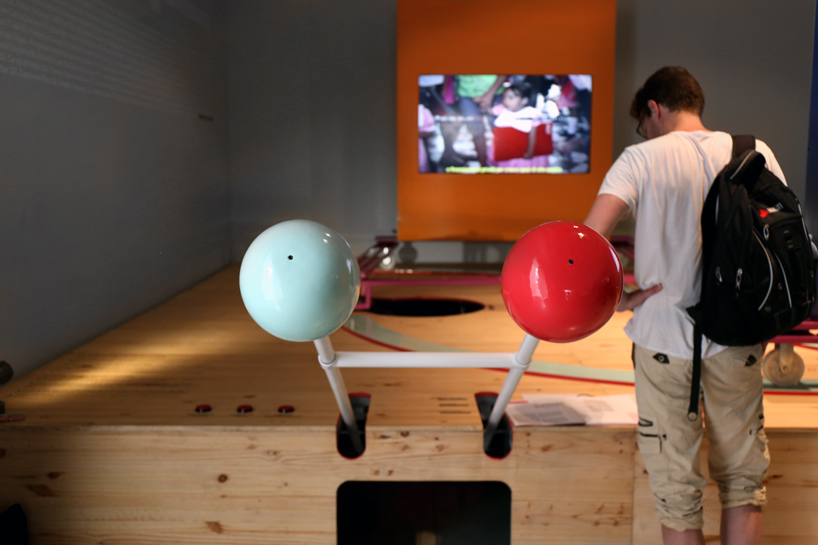
the whole installation can be operated by theses handles
image © designboom
db: what do you think colombian architecture firms have in common, and/or what are they doing differently from the rest of the world?
gm: we believe that public architecture in colombia in a way is responding to a collective need, as public buildings become an increasingly important mechanism of inclusion. the value we are giving to the architectural project, as part of an urban regeneration strategy, economic improvement and quality of opportunities, gives colombian architecture a spirit of optimism and change. I feel that in colombia we are working on designs that really have an impact on society and how we perceive the public.
the main question is what role us colombian architects should play and how our present architecture can generate social inclusion and generate thought.
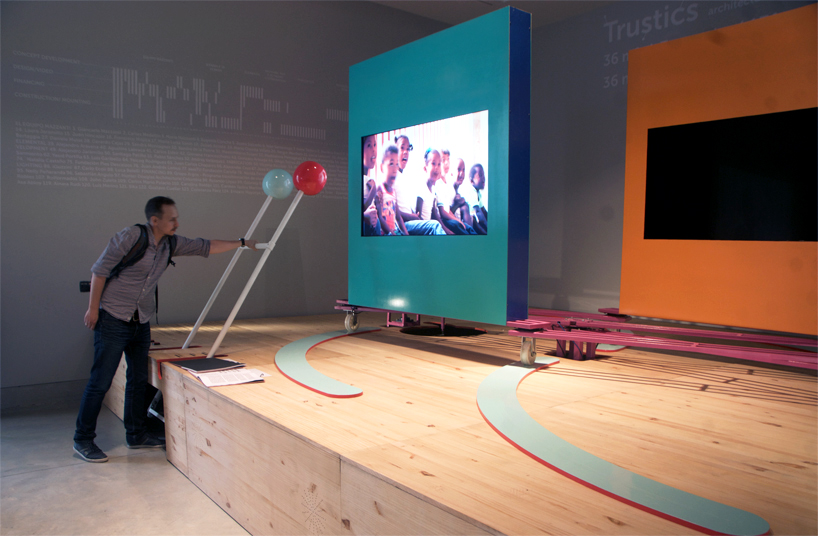
when the screens are besides each other, it represents the end of a project
image courtesy of el equipo mazzanti
db: what projects are you currently working on? what can we expect to see coming soon?
gm: we are trying to understand new options in the use of the architectural space, not just those that are based on efficient production and usefulness, or what we would call architectural function; we are interested in finding an investigating anomalous or different spaces that allow the emergence of new social relationships or behaviors in the current space. there is a marked interest in exploring the value of games and playfulness as mechanisms that create social relationships in space, and actions that foster a more open and suggestive architecture.
in this sense, we are working on peripheries and adverse social conditions, trying to understand the social idea from a broader sense that only poverty or economic deprivation gives. deficiencies in today’s world are much more ample and include the lack of free time for leisure, environment, lack of communal life and others. these deficiencies and present conditions of life are what we want to act, through an architecture that works from the public for the public.
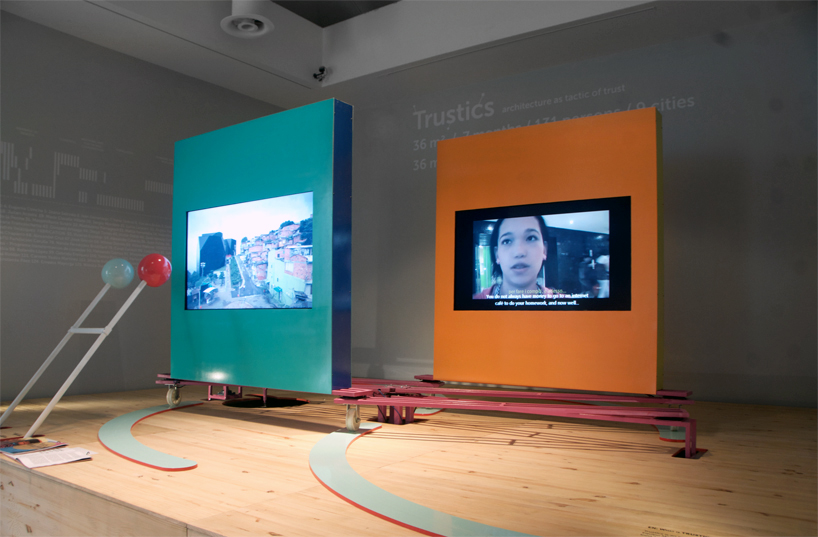
‘trustics’ in action
image courtesy of el equipo mazzanti
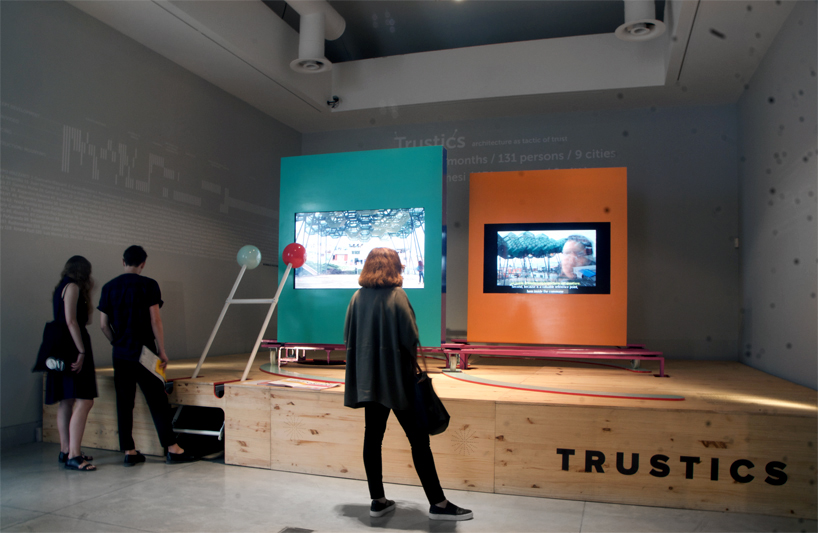
people enjoying the installation at the venice architecture biennale
image courtesy of el equipo mazzanti
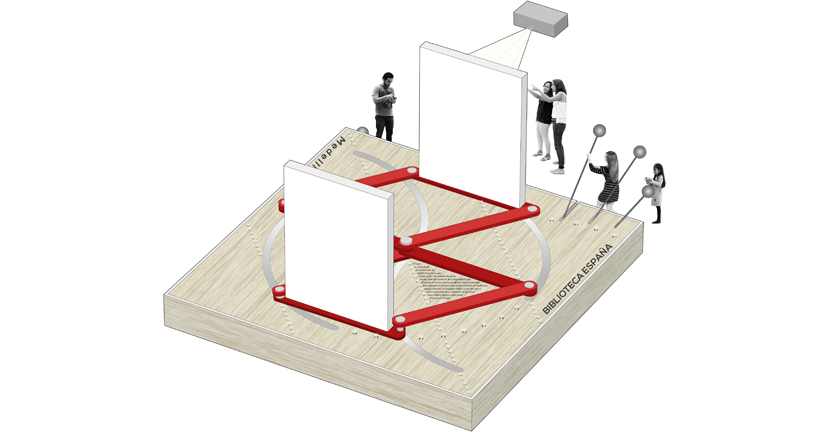
diagram
image courtesy of el equipo mazzanti
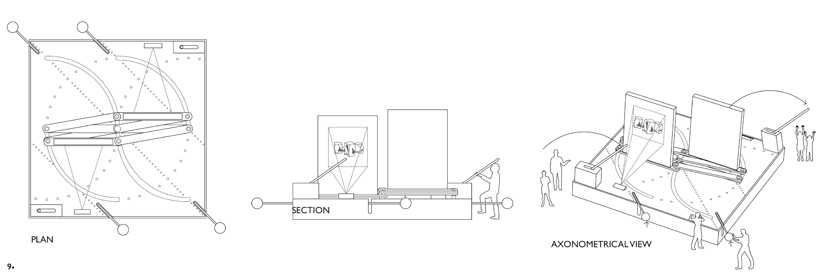
plan, section and axonometric view
image courtesy of el equipo mazzanti
architecture in colombia (33)
giancarlo mazzanti / el equipo mazzanti (4)
venice architecture biennale 2016 (75)
PRODUCT LIBRARY
a diverse digital database that acts as a valuable guide in gaining insight and information about a product directly from the manufacturer, and serves as a rich reference point in developing a project or scheme.
